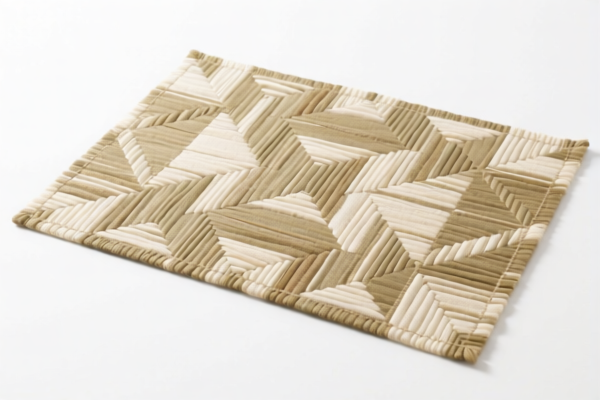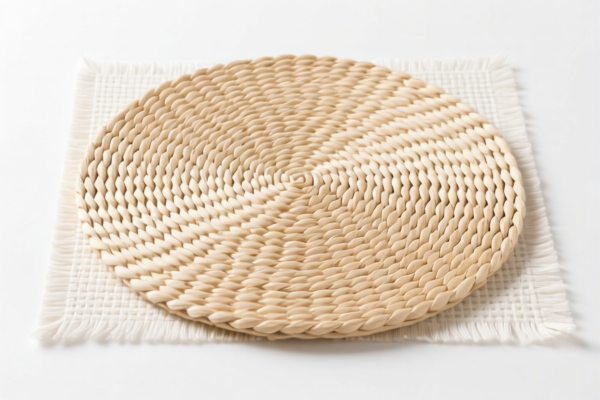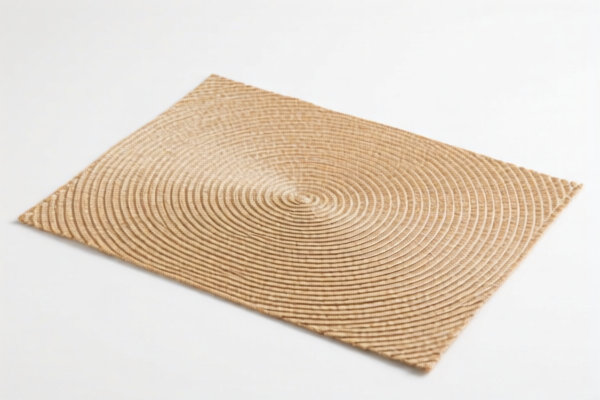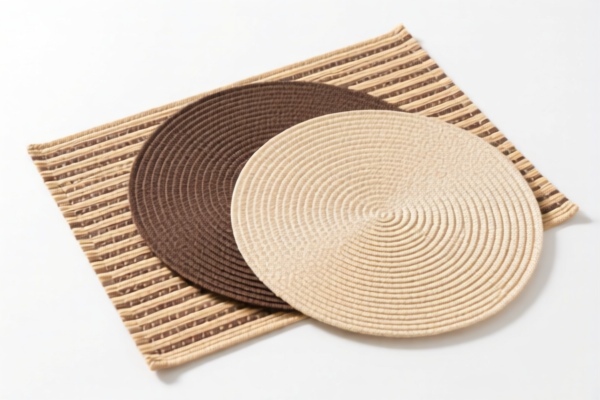| HS Code | Official Doc | Tariff Rate | Origin | Destination | Effective Date |
|---|---|---|---|---|---|
| 6302401000 | Doc | 43.9% | CN | US | 2025-05-12 |
| 6302402010 | Doc | 44.3% | CN | US | 2025-05-12 |
| 6304910120 | Doc | 43.3% | CN | US | 2025-05-12 |
| 6304920000 | Doc | 36.3% | CN | US | 2025-05-12 |
| 4205008000 | Doc | 55.0% | CN | US | 2025-05-12 |
| 4205000500 | Doc | 57.9% | CN | US | 2025-05-12 |
| 4202328000 | Doc | 60.7% | CN | US | 2025-05-12 |
| 3918901000 | Doc | 60.3% | CN | US | 2025-05-12 |
| 3918905000 | Doc | 59.2% | CN | US | 2025-05-12 |
| 3924901050 | Doc | 33.3% | CN | US | 2025-05-12 |
| 3924901010 | Doc | 33.3% | CN | US | 2025-05-12 |




Place Mats
Place mats are protective coverings for a dining table, typically placed under food service items. They serve both a practical and aesthetic function, safeguarding the table surface from damage while contributing to the overall table setting.
Material
Place mats are constructed from a diverse range of materials, each offering different characteristics:
- Fabric: Cotton, linen, polyester, and blends are common, offering varying degrees of washability and formality. Often feature printed designs or woven patterns.
- Plastic: Vinyl and PVC are durable, easy to clean, and water-resistant, making them suitable for casual dining and outdoor use.
- Cork: Provides a natural, heat-resistant surface; offers a rustic aesthetic.
- Wood: Often bamboo or other hardwoods; durable and provides a substantial feel, but requires more care.
- Woven Materials: Jute, seagrass, and rattan offer a natural, textured look.
- Rubber: Provides a non-slip surface and heat resistance.
- Paper: Disposable options for convenience, often used for parties or events.
Purpose
- Table Protection: Prevents scratches, heat damage, and staining of the table surface from hot dishes, spills, and utensils.
- Aesthetic Enhancement: Adds color, texture, and style to the table setting, complementing the tableware and overall décor.
- Noise Reduction: Dampens the sound of dishes and cutlery on the table.
- Hygiene: Provides a barrier between the table surface and food service items.
Function
Place mats function as a defined space for individual place settings, providing a visual boundary for plates, cutlery, and glassware. They contribute to a more organized and refined dining experience.
Usage Scenarios
- Everyday Dining: Used daily to protect tables and enhance the dining atmosphere.
- Formal Occasions: Employed as part of a sophisticated table setting for special events.
- Casual Dining: Utilized for picnics, barbecues, and outdoor meals.
- Children's Meals: Protects tables from spills and messes during children's meals.
- Restaurants & Cafés: Used to provide a clean and attractive dining surface.
Common Types
- Rectangular: The most common shape, suitable for most table sizes and settings.
- Square: Offers a more contemporary look.
- Round: Often used for individual placemats or smaller tables.
- Oval: Provides a softer, more elegant appearance.
- Runners: Longer, narrower mats placed along the center of the table, often used in conjunction with individual placemats.
- Braided/Woven: Offer a textured, rustic aesthetic.
- Printed/Patterned: Feature various designs, colors, and motifs.
- Embroidered/Lace: Provide a more formal and decorative appearance.
Place mats fall under various classifications depending on their material. Here's a breakdown of relevant HS codes based on the provided information:
- 6302401000: This code covers bed linen, table linen, toilet linen and kitchen linen; specifically, table linen knitted or crocheted, made of vegetable fibers (excluding cotton). The total tax rate is 43.9%, comprised of a 6.4% base tariff, a 7.5% additional tariff, and a 30% additional tariff effective April 2, 2025.
- 6302402010: This code also covers bed linen, table linen, toilet linen and kitchen linen; specifically, table linen knitted or crocheted, made of cotton. The total tax rate is 44.3%, comprised of a 6.8% base tariff, a 7.5% additional tariff, and a 30% additional tariff effective April 2, 2025.
- 3924901050: This code covers tableware, kitchenware, other household articles and hygienic or toilet articles, of plastics; specifically, other items including curtains and drapes, panels and valances; napkins, table covers, mats, scarves, runners, doilies, centerpieces, antimacassars and furniture slipcovers; and like furnishings. The total tax rate is 33.3%, comprised of a 3.3% base tariff and a 30% additional tariff effective April 2, 2025.
- 3924901010: This code also covers tableware, kitchenware, other household articles and hygienic or toilet articles, of plastics; specifically, other items including curtains and drapes, panels and valances; napkins, table covers, mats, scarves, runners, doilies, centerpieces, antimacassars and furniture slipcovers; and like furnishings, specifically curtains and drapes. The total tax rate is 33.3%, comprised of a 3.3% base tariff and a 30% additional tariff effective April 2, 2025.
Explanation of HS Code Structure (based on provided data):
The HS code is a standardized system for classifying traded products. Here's a breakdown using the example 6302401000:
- 63: Chapter 63 relates to linen, damask, table linen, etc.
- 02: Heading 02 within Chapter 63 specifies linen, damask, table linen, etc.
- 40: Subheading 40 further defines the specific type of linen, in this case, knitted or crocheted table linen.
- 10: This further specifies the material as vegetable fibers (excluding cotton).
- 00: The final two digits are used for statistical purposes.
Important Note:
Regarding HS codes 3924901050 and 3924901010, please note that a 30% additional tariff will be applied effective April 2, 2025.
Customer Reviews
No reviews yet.